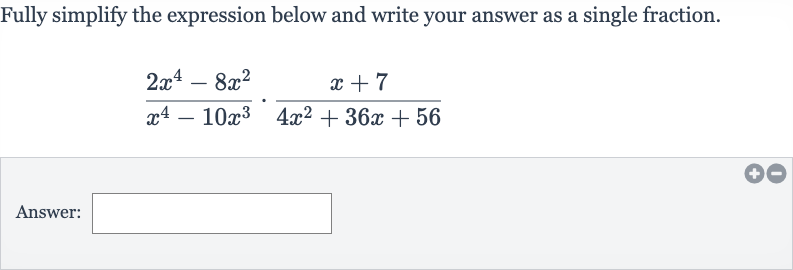AI tutor
Welcome to Bytelearn!
Let’s check out your problem:

Fully simplify the expression below and write your answer as a single fraction.Answer:
Full solution
Q. Fully simplify the expression below and write your answer as a single fraction.Answer:
- Factor Numerator and Denominator: First, factor the numerator and the denominator of the first fraction.The numerator can be factored by taking out the common factor of , resulting in .The denominator can be factored by taking out the common factor of , resulting in .
- Factor Second Fraction: Now, factor the numerator and the denominator of the second fraction. The numerator is already in its simplest form. The denominator can be factored by grouping. We can factor out a , resulting in . Then, we can factor the quadratic as .
- Combine and Cancel Common Factors: Combine the factored forms of the numerator and denominator to rewrite the original expression.The expression becomes .
- Simplify Expression: Next, we can cancel out common factors from the numerator and the denominator across the fractions.The terms cancel each other out. We are left with .
- Recognize Difference of Squares: Now, we can simplify the expression further by canceling out any common factors. The term in the numerator can cancel out two 's from the term in the denominator. We are left with .
- Substitute Factored Form: We can now simplify the expression by recognizing it as a difference of squares.The expression can be factored into .
- Cancel Common Terms: Substitute the factored form of into the expression.We now have .
- Combine Remaining Factors: Cancel out the common terms from the numerator and the denominator.We are left with .
- Final Simplified Expression: Combine the remaining factors to form a single fraction.The expression simplifies to .
- Final Simplified Expression: Combine the remaining factors to form a single fraction. The expression simplifies to .Finally, we can simplify the fraction by dividing both the numerator and the denominator by . The final simplified expression is .
More problems from Operations with rational exponents
QuestionGet tutor help
QuestionGet tutor help
